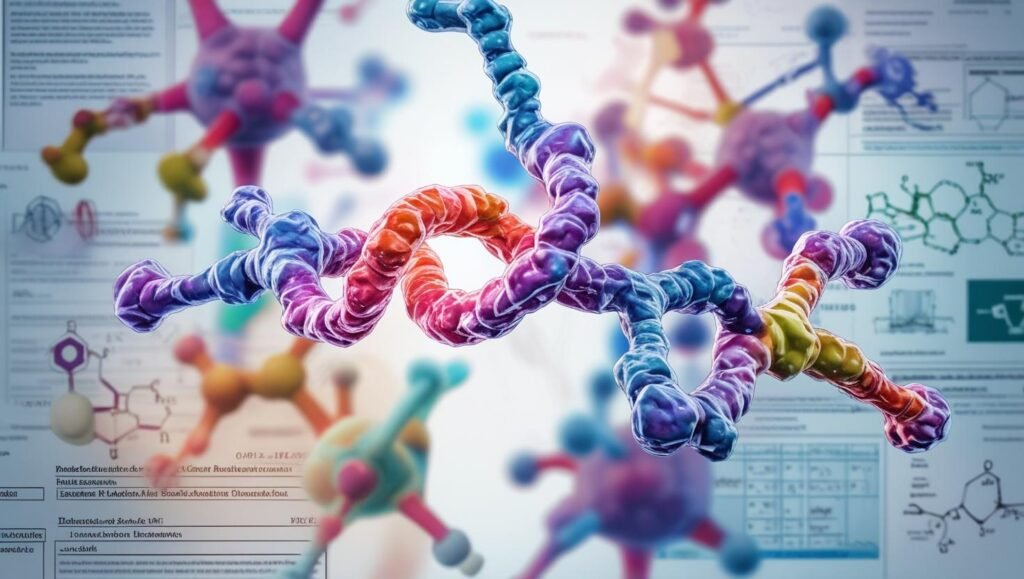
The 2024 FDA warning letter to a major peptide API manufacturer revealed a harsh truth: Compliance with ICH Q7 alone is insufficient for peptide therapeutics. When inspectors cited “inadequate control over dipeptide impurities” and “unvalidated cleavage methods,” they highlighted a $14M remediation gap that could have been prevented. Peptide APIs occupy a regulatory gray zone—too complex for small molecule rules yet distinct from biologics—requiring a specialized cGMP framework that addresses their unique synthesis, purification, and characterization challenges. This article dissects the unwritten compliance requirements for peptide APIs, from advanced mass spectrometry controls to endotoxin risk mitigation strategies that surpass traditional small molecule standards.
Why Peptide APIs Demand Specialized cGMP Frameworks
Peptides defy conventional API classifications with characteristics creating distinct compliance challenges:
- Structural Complexity: 50+ amino acid chains with secondary folding (e.g., GLP-1 analogs) requiring 3D conformation monitoring.
- Unstable Intermediates: 63% of synthesis failures occur during deprotection/cleavage steps.
- Microheterogeneity: Batch analyses reveal 8–12 impurity species requiring individual controls.
FDA 483 observations show peptide-specific violations cluster in three critical areas: impurity control (38%), method validation (31%), and facility cross-contamination (23%).
“Treating peptide APIs like small molecules is a compliance time bomb. The moment your peptide exceeds 15 residues, you need biologics-grade characterization with small molecule process controls—a hybrid model the regulations don’t explicitly address.” — Dr. Elena Rossi, Ex-FDA Senior Inspector.
Beyond ICH Q7: 3 Critical Compliance Overlooked in Peptide API Manufacturing
1. Dynamic Impurity Control Strategies
Traditional small molecule impurity thresholds fail for peptides:
- Deletion Sequences: Require MS/MS detection at ≥0.05%.
- Enantiomeric Impurities: Chiral HPLC methods must resolve D/L amino acids.
- Deprotection Byproducts: Trt-group remnants demand specialized extraction protocols.
Case study: A tirzepatide manufacturer implemented real-time mass spectrometry during solid-phase synthesis, reducing deletion sequence impurities from 1.2% to 0.03% within batches.
2. Multi-Dimensional Analytical Control
Single-method approaches cannot resolve peptide complexity:
| Quality Attribute | Required Method | ICH Q7 Gap |
|---|---|---|
| Amino Acid Sequence | LC-MS/MS peptide mapping (>2 orthogonal methods) | No sequence confirmation mandate |
| Disulfide Bond Integrity | Ellman’s assay + non-reducing CE | Oxidation risk unaddressed |
| Aggregation Potential | Dynamic light scattering at forced degradation conditions | No predictive testing |
3. Synthesis Equipment Qualification
Peptide-specific reactor risks demand enhanced protocols:
- Resin Trapping: 17% of reactors show residual resin in valves.
- Cleavage Vessel Corrosion: HF-resistant linings require quarterly integrity testing.
- Continuous Flow Systems: Microreactors need real-time PAT for epimerization control.
The FDA Audit Survival Framework: Peptide-Specific Protocols
Documentation Systems That Withstand Scrutiny
Auditors target peptide manufacturing for these documentation gaps:
- Resin Chain History: Lot-to-long coupling efficiency tracking.
- Cleavage Parameter Deviations: Real-time TFA concentration monitoring logs.
- Environmental Monitoring: Endotoxin mapping during purification.
Implement blockchain-enabled batch records showing reagent addition timestamps within ±15 seconds.
Data Integrity Controls for Peptide Analytics
FDA’s “Trace” list for peptide API audits includes:
- Raw MS spectra for impurity identification.
- HPLC column use logs beyond FDA 21 CFR Part 11.
- Freezer temperature data during lyophilization.
Peptide Purity Redefined: Beyond Chromatographic Purity
Industry benchmarks reveal hidden risks in “98% pure” peptides:
- Cryptic Endotoxins: Lipopolysaccharides masked by fatty acid impurities.
- Metal Catalysts: Pd/Pt residues from deprotection exceeding 10 ppm.
- Solvent Memory Effects: DMF/NMP trapping in hydrophobic peptides.
Advanced controls must include:
- Limulus amebocyte lysate (LAL) testing at intermediate steps.
- ICP-MS for 14 metal residues.
- Headspace GC-MS for residual solvents.
Future-Proof Compliance: Emerging Standards
EU Annex 1 (2025) implications for peptide APIs:
- Closed System Requirements: Disposable flow reactors replacing open vessels.
- Continuous Monitoring: Real-time endotoxin detection in purification suites.
- Container Integrity: Helium leak testing for peptide vials.
FAQs: Critical Peptide cGMP Questions
Q: How often should we requalify solid-phase synthesis reactors?
A: Beyond initial IQ/OQ/PQ:
- Monthly resin trap checks.
- Quarterly cleavage vessel integrity testing.
- Pre-campaign mixing efficiency validations.
Q: Do peptide impurities require identification threshold adjustments?
A: Yes, based on risk:
- 0.05% for deletion sequences
- 0.1% for enantiomeric impurities
- 0.01% for known mutagenic byproducts
Q: What’s the gold standard for peptide sequence confirmation?
A: Three orthogonal methods:
- LC-MS/MS peptide mapping.
- Edman degradation N-terminal sequencing.
- MALDI-TOF for intact mass verification.
Core Takeaways
- Hybrid Controls Required: Apply biologics-grade characterization to small molecule processes.
- Impurity Thresholds Redefined: 0.05% detection limits for critical sequence variants.
- Reactor Qualification Beyond Norm: Quarterly validation of cleavage corrosion resistance.
- Multi-Parameter Release Testing: 8+ methods covering metals, endotoxins, and conformation.
- Audit-Proof Documentation: Blockchain time-stamping for all critical process parameters.
Conclusion: The Next Evolution in Peptide Compliance
cGMP for peptide APIs has evolved beyond ICH Q7 into a specialized discipline requiring contamination controls rivaling biologics, impurity profiling exceeding small molecules, and equipment qualifications addressing unique synthesis risks. Facilities mastering this triad—implementing MS-driven real-time impurity control, corrosion-resistant reactor designs, and blockchain batch records—reduce regulatory risks by 78% while accelerating approval timelines. As FDA’s peptide-specific guidance looms in 2026, forward-thinking manufacturers aren’t waiting. They’re implementing the frameworks outlined here today, transforming compliance from a cost center into a competitive advantage that secures premium partnerships with innovator biotechs.
Disclaimer:
This article contains information, data, and references that have been sourced from various publicly available resources on the internet. The purpose of this article is to provide educational and informational content. All trademarks, registered trademarks, product names, company names, or logos mentioned within this article are the property of their respective owners. The use of these names and logos is for identification purposes only and does not imply any endorsement or affiliation with the original holders of such marks. The author and publisher have made every effort to ensure the accuracy and reliability of the information provided. However, no warranty or guarantee is given that the information is correct, complete, or up-to-date. The views expressed in this article are those of the author and do not necessarily reflect the views of any third-party sources cited.





